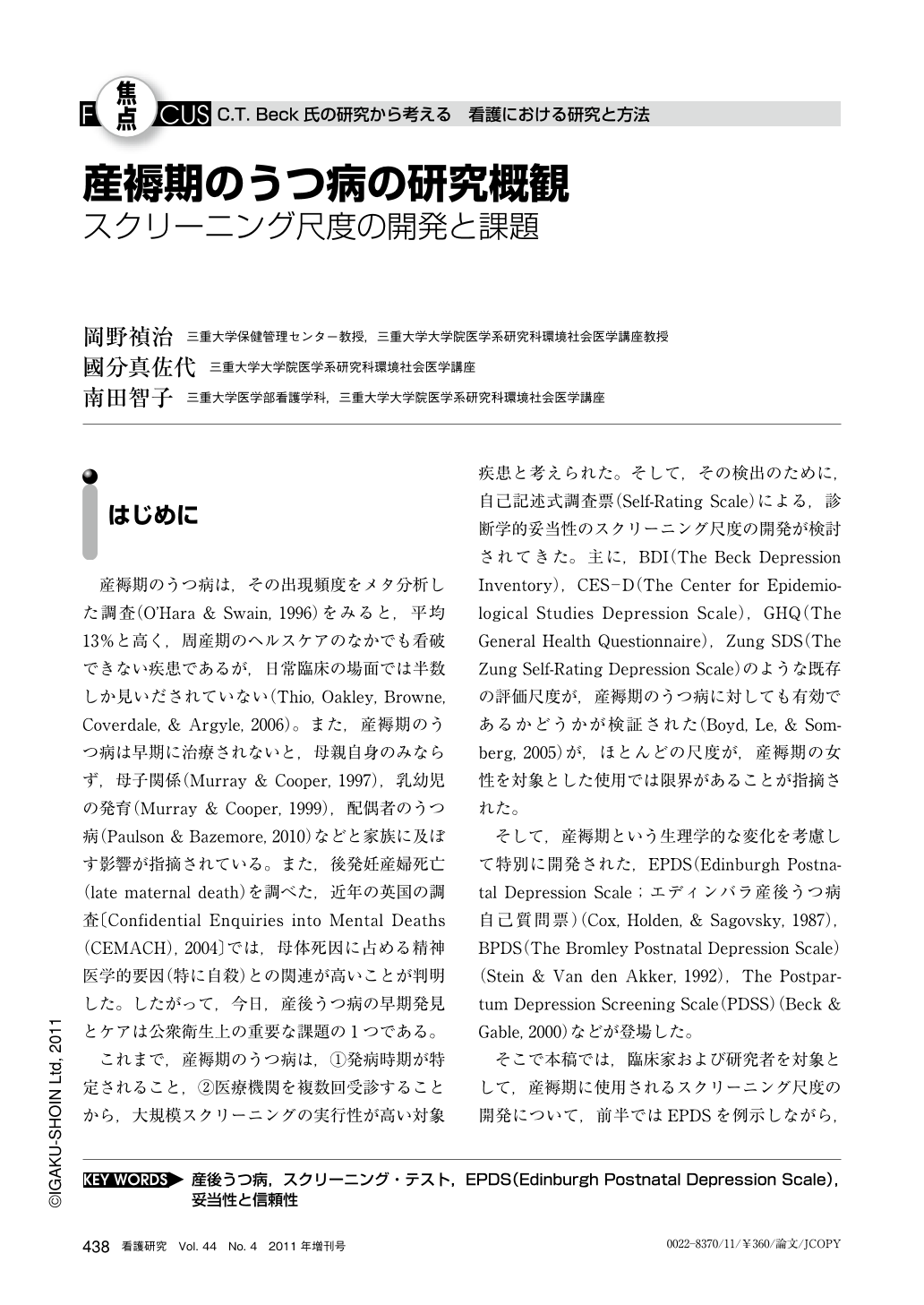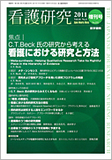Japanese
English
- 有料閲覧
- Abstract 文献概要
- 1ページ目 Look Inside
- 参考文献 Reference
はじめに
産褥期のうつ病は,その出現頻度をメタ分析した調査(O'Hara & Swain, 1996)をみると,平均13%と高く,周産期のヘルスケアのなかでも看破できない疾患であるが,日常臨床の場面では半数しか見いだされていない(Thio, Oakley, Browne, Coverdale, & Argyle, 2006)。また,産褥期のうつ病は早期に治療されないと,母親自身のみならず,母子関係(Murray & Cooper, 1997),乳幼児の発育(Murray & Cooper, 1999),配偶者のうつ病(Paulson & Bazemore, 2010)などと家族に及ぼす影響が指摘されている。また,後発妊産婦死亡(late maternal death)を調べた,近年の英国の調査〔Confidential Enquiries into Mental Deaths(CEMACH), 2004〕では,母体死因に占める精神医学的要因(特に自殺)との関連が高いことが判明した。したがって,今日,産後うつ病の早期発見とケアは公衆衛生上の重要な課題の1つである。
これまで,産褥期のうつ病は,①発病時期が特定されること,②医療機関を複数回受診することから,大規模スクリーニングの実行性が高い対象疾患と考えられた。そして,その検出のために,自己記述式調査票(Self-Rating Scale)による,診断学的妥当性のスクリーニング尺度の開発が検討されてきた。主に,BDI(The Beck Depression Inventory),CES-D(The Center for Epidemiological Studies Depression Scale),GHQ(The General Health Questionnaire),Zung SDS(The Zung Self-Rating Depression Scale)のような既存の評価尺度が,産褥期のうつ病に対しても有効であるかどうかが検証された(Boyd, Le, & Somberg, 2005)が,ほとんどの尺度が,産褥期の女性を対象とした使用では限界があることが指摘された。
そして,産褥期という生理学的な変化を考慮して特別に開発された,EPDS(Edinburgh Postnatal Depression Scale;エディンバラ産後うつ病自己質問票)(Cox, Holden, & Sagovsky, 1987),BPDS(The Bromley Postnatal Depression Scale)(Stein & Van den Akker, 1992),The Postpartum Depression Screening Scale(PDSS)(Beck & Gable, 2000)などが登場した。
そこで本稿では,臨床家および研究者を対象として,産褥期に使用されるスクリーニング尺度の開発について,前半ではEPDSを例示しながら,その手技,信頼性と妥当性について簡単に解説する。そして後半では,産褥期のうつ病の臨床実践の現場におけるスクリーニング・プログラムの現状と課題についても言及する。
There is widespread consensus that postnatal depression (PND) is a common and important mental health problem. Recent national recommendations might serve to reduce considerable variations in current clinical practice. This paper presents a review of basic psychometric property of screening test for PND and the need for reliable and valid screening instruments. Published psychometric data (e.g., reliability, sensitivity, specificity, positive predictive value, negative predictive value, cut-off point, and timing of screening) of each self-report instrument are presented and critiqued. Screening tool like The Edinburgh Postnatal Depression Scale (EPDS) is the most extensively studied measure with postpartum women with moderate psychometric soundness.
There have been considerable efforts to develop screening programme that might enhance not just the detection but also the successful treatment of PND. This paper also pointed out that success of a screening programme extends beyond the diagnostic accuracy of a screening tool. It is not clear that screening achieves its ultimate goal, namely improving outcomes and reducing the burden of PND. These factors rely on additional patient and clinician factors such as the acceptability of the screen from women and health care givers. An implication for clinical practice, cost effectiveness of formal identification methods for PND in primary care also was discussed.

Copyright © 2011, Igaku-Shoin Ltd. All rights reserved.


